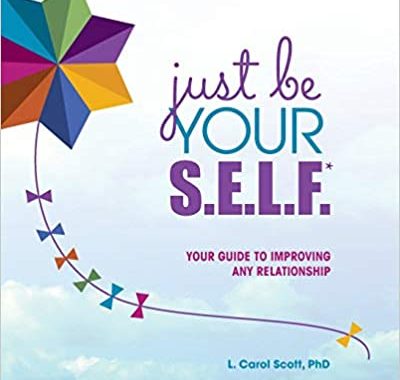Article by L. Carol Scott PhD
Author of: “Just be Your S.E.L.F.”
My First Experience With Kickstarter
I had an excellent first experience using Kickstarter.
Here’s a quick summary of what I did and my lessons learned, intermixed:
-
- I used Kick to raise funds for self-publication costs on my first book: copy-editing, proof-reading, graphic design, and printing the first 200.
- If you have a great friend and/or fan base, don’t go nuts with spending money or a lot of time and energy on a professional video describing your project. I just sat at the computer and spoke from the heart, after writing out a few thoughts I wanted to make sure and include. Unless you’re trying to attract investors who don’t know you at all…a simple chat to the camera is sufficient.
- I used my personal FB page for all my invitations to invest. I only promoted to my friends, family, and colleagues. That let me keep things personal.
- I kept my language strictly to asking them to “pledge” an “investment” in a “project” and the “rewards” I promised on the investment. I NEVER said gift or donation or contribution.
- I asked every day. Every single day of my 30-day campaign I posted on FB with the progress toward goal and my gratitude. I was wildly, humbly, enthusiastically, emotionally grateful DAILY for how my friends and fam were making a dream come true with their belief in me and their INVESTMENT in me…always added, will you join US?
- Every post had a photo with it, mostly stock photos to express my emotions. Once or twice I used SNIP screen shots of the Kick dashboard.
- Lesson learned: set your budget realistically (make a spreadsheet; include the %age cut that the Kick site takes, postage and mailing supplies for your rewards, etc.). Yet also pick a number that feels right and might be compelling for some reason. My actual budget for my book publication was $4,500 but I thought that number would be scary–too big for friends and fam. So, I chose $3,333, provided an explanation for the meanings that odd number held for me, and trusted in the power of my intention to raise more than that. In the end, I raised almost the whole $4,500, as I exceeded my goal by 35%. Remember, if you don’t raise your whole goal on Kick, you don’t get any of the pledges. Setting your goal too high may mean you wind up with nothing.
- Lesson learned: Set your timeline realistically, both for the campaign–how long will it take to raise the funds you need, but without dragging on and losing momentum–and for the process to get to them receiving the reward for their investment. I planned an in-person launch party that proved really hard to plan in the time-frame I had, in the end.
- Lesson learned; Being grateful for the investments made and enthusiastic about achieving your goal keeps everyone positive and engaged. I had a whole cheer-leading squad of “we can do this!” investors by the end of the 30 days, commenting on my posts.
- I updated investors several times during the campaign, in “behind the scenes” private messages through the Kick platform. I continued doing that throughout the spending of their investment–book is at the copy editor, book is in graphic design, book is at the printer–right up to the final update of, “I’m mailing your book rewards over these next few weeks!”
- When I got down to the 1 week to deadline mark, when the early adopters were all on board, along with most of the types who need 1/2-dozen reminders before action, and I was still uncomfortably shy of goal, I sent 4 strategic texts or emails to friends and family members who I thought could each easily pledge $100 (my highest level), but were not on Facebook at all, and knew nothing of the campaign. That one action got me to goal and added most of the excess 35%. Two of those investors pledged $300 or more.
That’s all I can think of right now that seems relevant. Be sure to read the Kickstarter site for how to use it.
Here’s the link to my campaign, so you can see how I set it up, if you’re interested! Enjoy and go for it, if you need some start-up funds and will have a way to give people a “return” on their investment. It was actually pretty easy and fun.
My first book, Just Be Your S.E.L.F. (Self-governed, Ego-aware, Leading, Free)–Your Guide to Improving Any Relationship.
This article is printed here with permission of the author, L. Carol Scott PhD.

